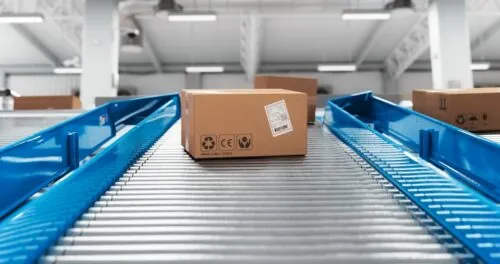Trends And Challenges For The Retail Industry
The world of retail relies heavily on the transportation industry to keep the supply chain moving and customer satisfaction at its peak. This year, the retail landscape continues to undergo transformations driven by new technological advancements, changing market dynamics, and shifting consumer behaviors.
It’s crucial for retailers to keep up with the trends and to address the challenges in the industry to remain competitive and resilient.
In this blog by FreightCenter, we will identify and explore the key trends and challenges in the retail sector in 2024.

Trends for the Retail Industry
In 2024, there are many new and emerging trends in the retail industry that many are adapting to

Social Commerce And E-Commerce Dominance
In the age of social media and increased internet usage, social commerce and e-commerce dominate the retail industry.
So, what’s the difference between e-commerce and social commerce?
E-commerce is a customer’s shopping experience via a website like Amazon or the Target website. In contrast, social commerce is a more up-and-coming trend, where customers purchase products through their social media experience. An example is TikTok shop or Walmart’s RomCommerce campaign last holiday season.
The rise of both retail trends means a higher volume of purchases and deliveries that retailers must keep up with. Retailers can invest in last-mile delivery innovations by partnering with local delivery services to expedite shipments and reduce costs.
Technological Advancements
Technological advancements in logistics and transportation can contribute to getting shipments to customers faster, especially with the rise of social commerce, where consumers expect their products to be delivered as soon as possible.
Artificial Intelligence (AI), the Internet of Things (IoT), and automation are being utilized to enhance supply chains. IoT devices improve real-time tracking of shipments, allowing customers and retailers to ensure the safety of packages and to know where they are in the shipping process.
AI helps to optimize inventory management and provide analytics that gives retailers insight into customer behavior, allowing for more personalized marketing strategies to drive business.
Other automated systems, like robots in warehouses or chatbots that handle customer service requests, help streamline operations, reduce costs, and contribute to higher customer satisfaction.
Omnichannel Retailing
Another significant trend in 2024 is the rise of omnichannel retailing. Omnichannel retailing provides a seamless and coordinated customer experience through all customer channels – including social media, apps, websites, and physical stores.
To deliver a consistent shopping experience, retailers invest in systems that enable inventory visibility and unified customer experiences.
Sustainability
The push for more sustainability practices is nothing new in the retail industry, but it has become more prevalent than ever before. It’s considered more of a necessity rather than a trend by many in the industry and by many consumers.
More retailers are utilizing recycled materials in their packaging and pushing to reduce their carbon footprints by using electric vehicles in their delivery process.
Challenges for the Retail Industry
Although many of the trends in 2024 are propelling the retail industry to new heights, there are still some challenges retailers face.

Supply Chain Disruptions
Geopolitical tensions, unexpected natural disasters, and even pandemics can lead to supply chain disruptions, which pose a critical challenge for retailers. Supply chain disruptions lead to delivery delays, increased costs, and inventory shortages.
Although some supply chain disruptions can prove inevitable, retailers can build more resilient supply chains by improving technology and diversifying their suppliers so that their reliance isn’t on just one supplier if things go awry.
Economic Uncertainty
Economic uncertainty is another challenge that can be inevitable for retailers. Factors such as shifting consumer spending patterns and inflation, among other aspects of financial uncertainty, affect the retail industry. Inflation of goods and services can impact pricing strategies and profit margins.
Changing Consumer Expectations
Lastly, changing consumer expectations is the biggest challenge that retailers face. Influenced by technological advancements, social media use, and shifting societal values, consumer expectations are constantly evolving.
The rising desire for ultra-fast delivery, overconsumption due to social media’ s influence, and social commerce are among the consumer expectations in 2024.
Retailers must stay ahead of these changes to remain competitive and successful. Retailers can stay ahead of the curve by monitoring and analyzing trends through AI analytics and enhancing transportation and delivery processes to keep customer loyalty and enhance consumer experience.
As we eventually move forward into different trends and new challenges, the retail industry must stay informed and adapt its processes. Embracing both trends and challenges is the key to navigating retail’s complexities and achieving overall success.


